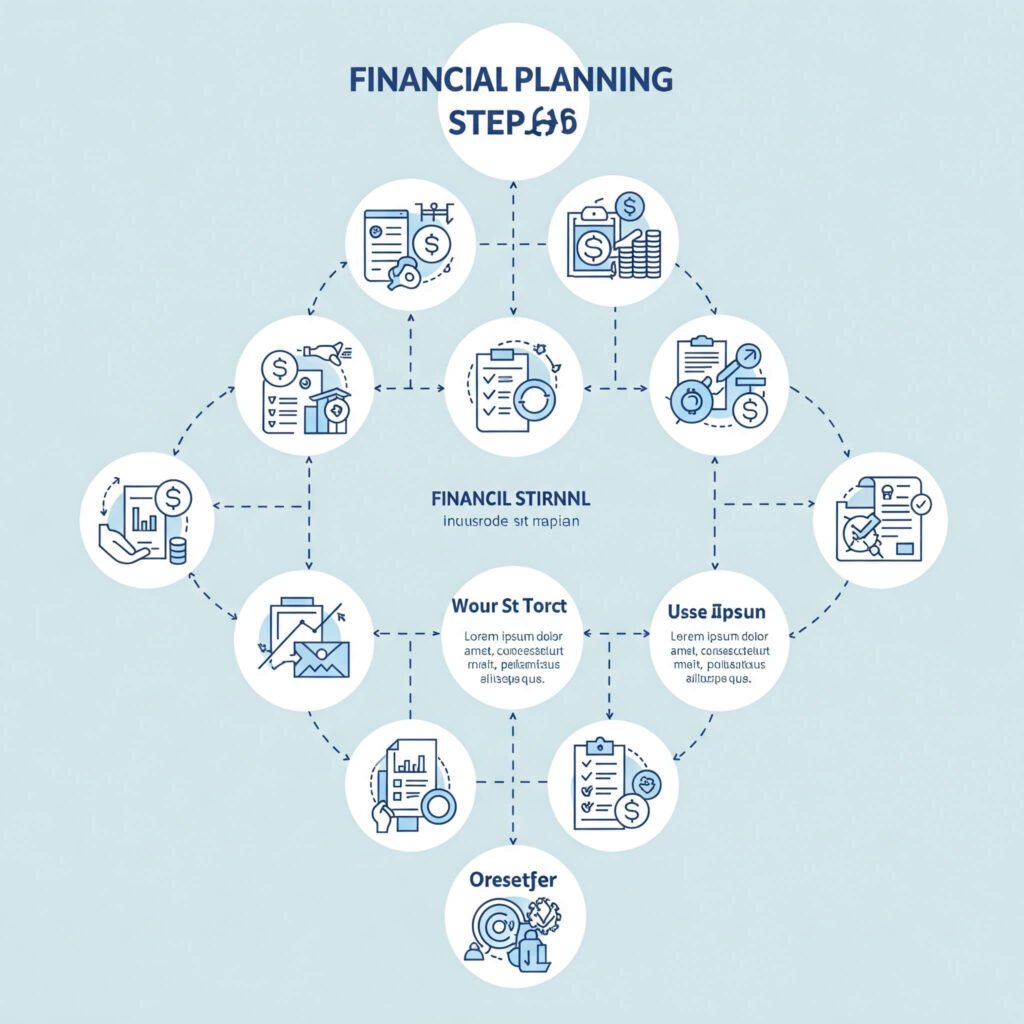Financial planning for small businesses is the backbone of sustainable growth and long-term success. Without a clear financial roadmap, even the most innovative ventures can falter. This step-by-step guide to financial planning equips small business owners with actionable strategies to manage cash flow, budget effectively, and achieve their goals. Whether you’re a startup or an established enterprise, mastering financial planning ensures you stay competitive and resilient.
Importance of Financial Planning for Small Businesses
Effective financial planning for small businesses is more than number-crunching—it’s about crafting a strategy to realize your vision. According to the U.S. Small Business Administration (SBA), over 50% of small businesses fail within five years, often due to poor financial management. A robust small business financial strategy helps you anticipate challenges, allocate resources wisely, and make informed decisions.
Key Benefits of Small Business Financial Planning
- Enhanced Cash Flow Control: Ensures funds for expenses and growth investments.
- Risk Reduction: Prepares for unexpected costs or economic shifts.
- Strategic Goal Alignment: Links daily operations to long-term objectives.
- Investor Appeal: A clear financial plan attracts funding from banks or investors.

Step 1: Evaluate Your Small Business Financial Health
The foundation of financial planning for small businesses lies in understanding your current financial position. Reviewing income, expenses, assets, and liabilities provides a clear snapshot of your small business financial health.
Steps to Assess Your Financial Status
- Compile Financial Records: Gather balance sheets, income statements, and cash flow reports.
- Examine Revenue Sources: Identify primary income streams and their reliability.
- Monitor Expenses: Categorize fixed (e.g., rent) and variable (e.g., marketing) costs.
- Determine Profitability: Subtract total expenses from revenue to calculate net profit.
Example: Sarah, a coffee shop owner, used QuickBooks to assess her finances. She found 60% of expenses tied to inventory, leading her to secure better supplier terms.
Step 2: Define Small Business Financial Goals
A critical aspect of financial planning for small businesses is setting specific, measurable financial objectives. Whether aiming for a 20% revenue increase or saving for a product launch, clear goals shape your small business budgeting strategy.
Types of Financial Objectives for Small Businesses
- Short-Term Objectives: Address immediate needs, like clearing a $5,000 loan in six months.
- Mid-Term Objectives: Support growth, such as hiring two employees within 18 months.
- Long-Term Objectives: Focus on sustainability, like reaching $1 million in revenue in five years.

Step 3: Develop a Small Business Budget Plan
A well-structured budget is central to financial planning for small businesses. It ensures resources align with goals while controlling expenses through effective small business budgeting.
How to Create a Small Business Budget
- Project Revenue: Estimate income using historical data and market trends.
- Detail Expenses: List fixed costs (e.g., utilities) and variable costs (e.g., advertising).
- Reserve Savings: Allocate 10-20% of revenue for emergencies or investments.
- Review Regularly: Adjust your budget monthly to reflect changes.
Pro Tip: Use tools like Xero or Wave for real-time budget tracking and reporting.
Step 4: Optimize Small Business Cash Flow Management
Effective cash flow management is vital for financial planning for small businesses. Maintaining positive cash flow ensures you can cover bills, seize opportunities, and navigate slow periods.
Tips for Small Business Cash Flow Management
- Invoice Promptly: Send invoices immediately and offer early payment incentives.
- Negotiate Terms: Extend supplier payment deadlines to boost liquidity.
- Build a Cash Reserve: Save 3-6 months of operating expenses.
- Leverage Software: Use tools like Float for accurate cash flow forecasts.
Example: Mike, a freelance graphic designer, improved his cash flow by 30% in three months by using invoicing software and setting clear payment terms.
Step 5: Plan for Small Business Taxes and Compliance
Tax planning is an essential component of financial planning for small businesses. Staying compliant and maximizing deductions protects your business from penalties.
Small Business Tax Planning Strategies
- Know Your Tax Requirements: Understand federal, state, and local obligations.
- Consult a CPA: A professional can identify deductions, like equipment purchases.
- Reserve Tax Funds: Save 25-30% of profits monthly for taxes.
- Use Tax Software: Streamline filing with TurboTax or H&R Block.

Step 6: Review and Refine Your Small Business Financial Plan
Financial planning for small businesses is an ongoing process. Regularly reviewing your small business financial strategy ensures alignment with goals and adaptability to market changes.
How to Monitor Your Small Business Financial Plan
- Conduct Quarterly Reviews: Schedule regular financial check-ins.
- Track Key Metrics: Monitor profit margins, revenue growth, and other KPIs.
- Adjust for Change: Adapt to new expenses, market shifts, or unexpected events.
- Seek Expert Guidance: Consult financial advisors for complex decisions.
Data Insight: A Forbes study found that businesses reviewing their financial plans quarterly are 30% more likely to achieve their goals.
Key Takeaways for Small Business Financial Success
Financial planning for small businesses empowers you to steer your venture toward success. By evaluating your financial health, setting clear objectives, budgeting strategically, managing cash flow, planning for taxes, and refining your plan, you’ll build a resilient and profitable business. Take one actionable step today—like analyzing expenses or setting a short-term goal—and watch your business flourish.
Outbound Link:


